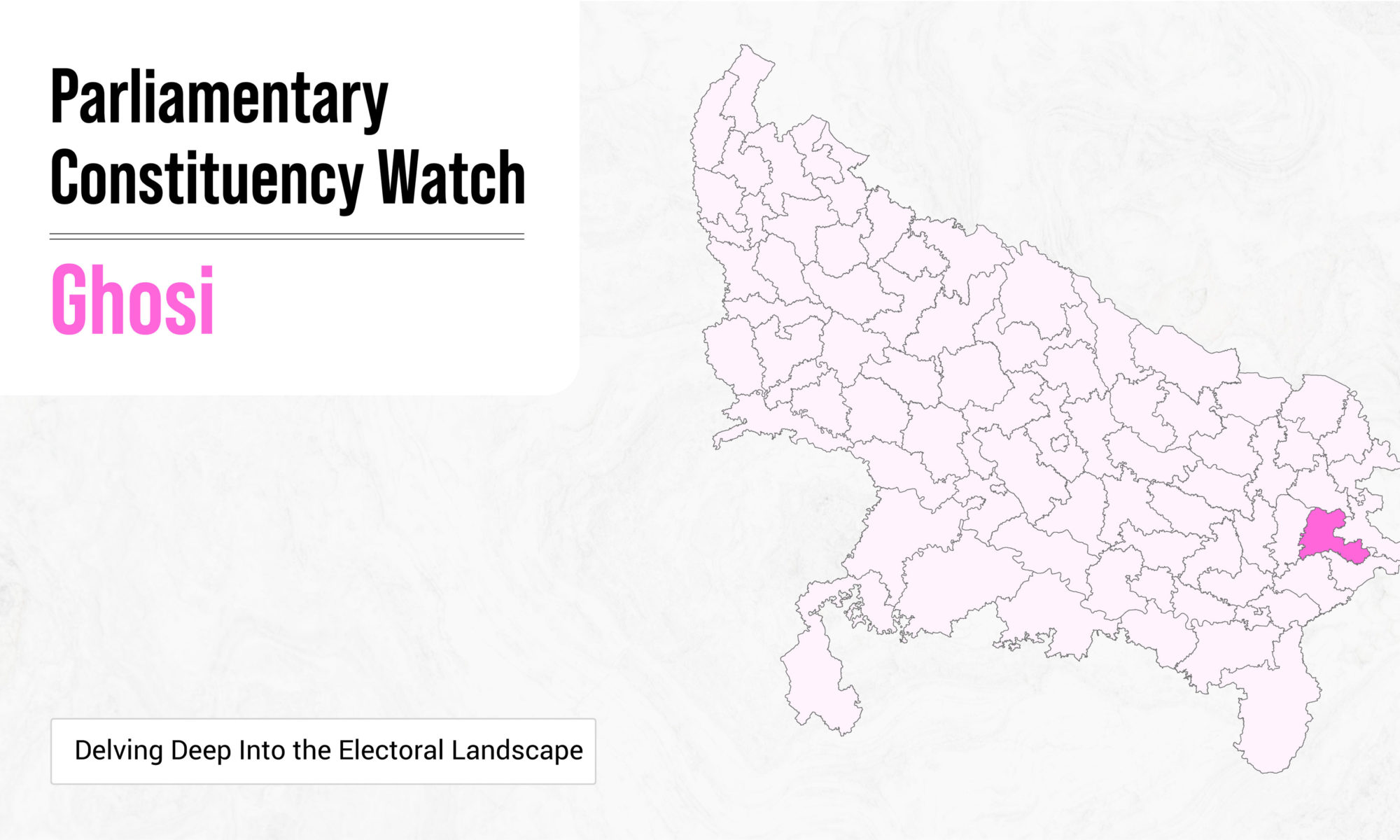Location
Ghosi Lok Sabha constituency is one of the 80 Lok Sabha constituencies in the Indian state of Uttar Pradesh. It comprises 5 assembly constituencies and 2 districts.
Category
Designated as a General Constituency.
Voter Turnout
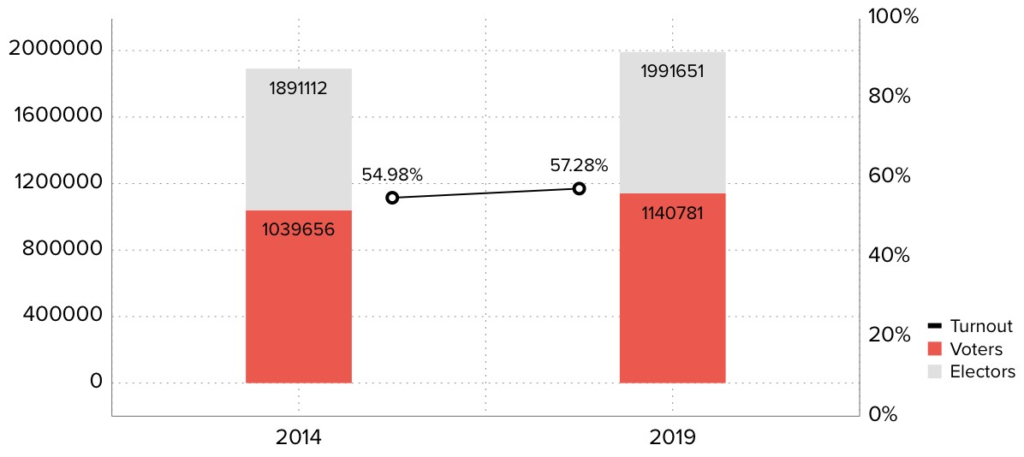
Ghosi Electoral Turnout Rates
During the 2014 elections, the total number of electors was 18,91,112 and the turnout stood at 54.98%, in real numbers- 10,39,656 voters. 2019 witnessed a turnout increase; out of the 19,91,651 electors, 57.28% of voters exercised their constitutional rights. In real numbers- 11,40,781 voters.
Representation and Results
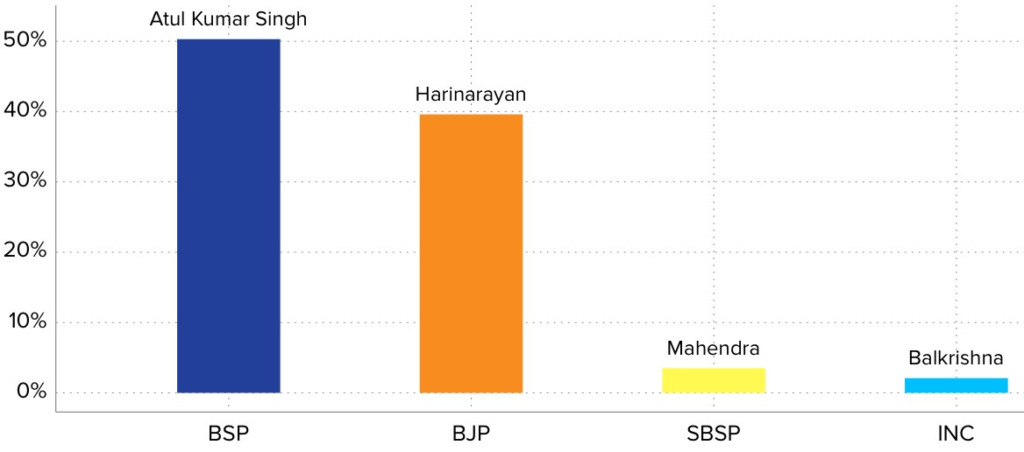
Party Wise Vote Share
2019’s parliamentary election winner, BSP’s Atul Kumar Singh gained a vote share of 50.30% and defeated BJP’s Harinarayan whose vote share stood at 39.60%. The other prominent candidates in the fray were SBSP’s Mahendra with a vote share of 3.50% and INC’s Balkrishna with a 2.10% of vote share.
Voting History –2014 & 2019
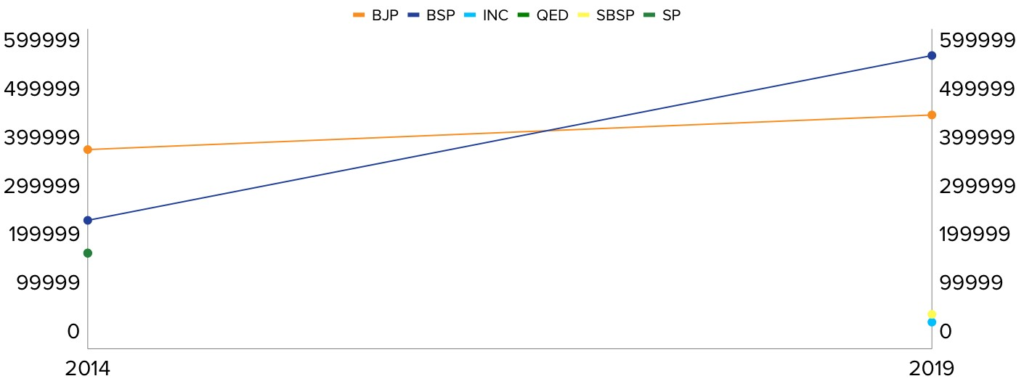
Party Wise Shift in Votes
In 2014, BJP won the constituency and earned 3,79,797 votes followed by 4,51,261 votes in the 2019 election victory. On the other hand, BSP garnered 2,33,782 votes in 2014 and 5,73,829 votes in the 2019 elections.
Parties at helm through the years
The Ghosi constituency has been represented by a number of different parties over the years.
In 1957, the Indian National Congress (INC) emerged triumphant, marking the beginning of its political journey. The Communist Party of India (CPI) gained prominence in 1962 and maintained its influence in 1967 and 1969. The year 1971 witnessed another victory for the CPI. However, the political landscape saw a significant shift in 1977 when the Janata Party (JP) captured the electoral spotlight. The CPI reemerged with a win in 1980, but the INC regained its dominance in 1984 and 1989. The early 1990s brought successive victories for the INC in 1991, followed by an independent candidate’s win in 1996.

Timeline of Winning Parties
The late 1990s marked victories for the Samata Party (SAP) in 1998 and the Bahujan Samaj Party (BSP) in 1999. The Samajwadi Party (SP) secured its position in 2004, while the BSP triumphed in 2009. The Bharatiya Janata Party (BJP) seized victory in 2014 before BSP reclaimed the constituency with a victory in 2019.
Party-wise success rate
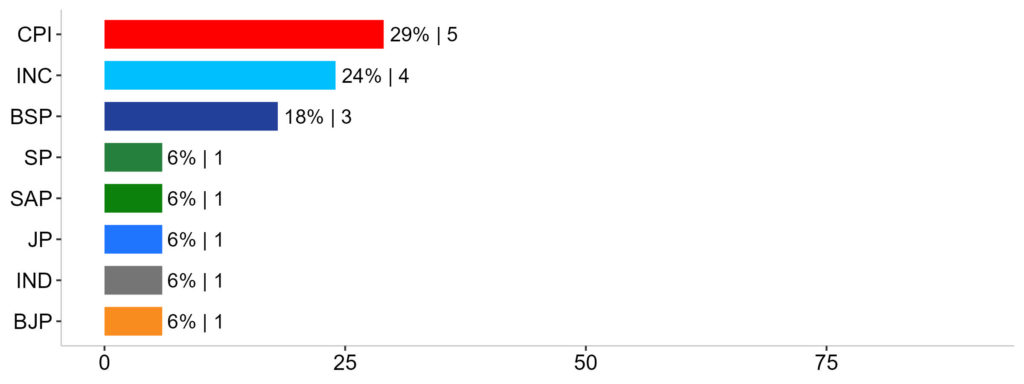
Success Rate
In terms of the success rate in securing the Ghosi Lok Sabha seat, both CPI and the INC had exhibited the highest rate of success over the years, standing at 29% and 24% respectively. Among other prominent parties, BSP enjoyed a success rate of 18% while it is 6% for BJP.
Gender Wise Distribution of Contestants
During the 2009 elections, there were 16 contestants and 15 of them were male and 1 female, in percentage- 94% and & 6%. In 2014, the total number of contestants increased to 18, however, the participation remained exclusively males.

Gender Wise Distribution of Candidates
In 2019, on the other hand, the total number of contestants decreased to 15 whereby 14 were males and 1 female, in percentage that is 93% and 7% respectively.
Gender wise voter turnout
In 2009, out of a total of 16,90,002 electors, 7,65,629 voters cast their ballots. Of the 9,07,492 male electors, 4,15,215 participated in the election, constituting a turnout rate of 46%. There were 7,82,510 female electors and of that, 3,50,414 chose to vote with a turnout rate of 45%.
In 2014, there are 18,91,113 people who are eligible to vote and 10,39,656 of them chose to exercise their right to vote. Out of these, 10,40,034 were male electors and 8,51,079 were female electors. 53% of male electors (5,47,483) and 58% of female electors (4,92,173) cast their ballots.
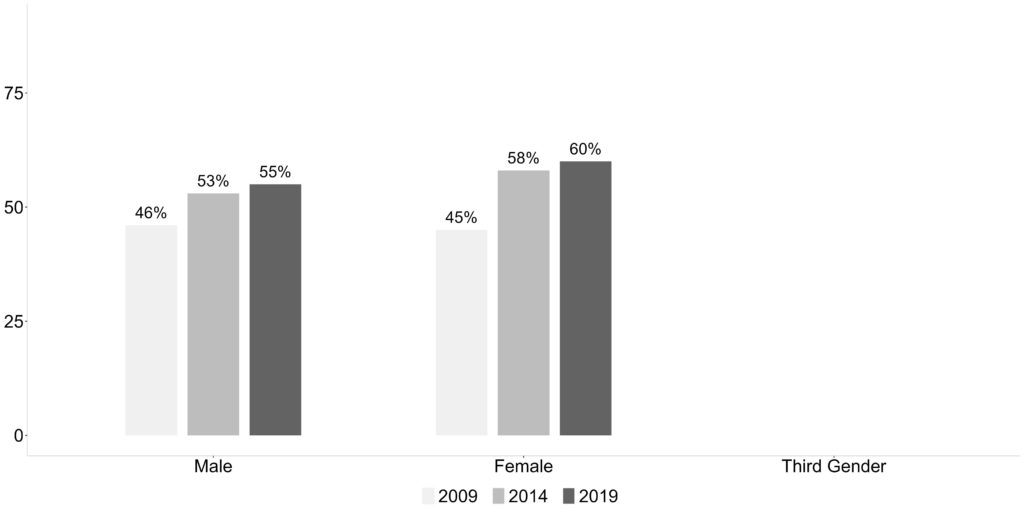
Gender Wise Voter Turnout
The total count of electors in 2019 was 19,91,565 out of which 11,37,117 chose to cast their ballot in the parliamentary elections. Out of 10,73,363 male electors, only 55% voted which is 5,89,077 male voters in real numbers. On the other hand, the voter turnout for females stood at 61% which translates to 5,48,040 voters out of a total of 9,18,202 female electors in real number.
In 2017, transgender people were included as a separate category of the third gender in electoral rolls. There were no electors belonging to the third gender category in the parliamentary constituency during the 2019 elections.
Gender-Wise Literacy Rate
We are taking a peek at the gender-wise literacy rate of the Mau and Ballia districts which are part of the Ghosi parliamentary constituency as literacy is considered an essential indicator of the socioeconomic development of the region.
Mau District
The 2011 census of India has pegged the overall literacy rate of the Ghosi district at 62%. Gender-wise, the male literacy rate in the district is 69% whereas, for females, the literacy rate stands at 54%.

Gender Wise Literacy Rate
Ballia District
The overall literacy rate of the district is 61%. However, when it comes to gender, the literacy rate for males in the district stands at 69% while the female literacy rate is 51%.
Stay updated on the electoral statistics for parliamentary constituencies and the changing dynamics on Meradesh App. Available on Appstore and Play Store.
Reach your constituents, gain insights into their motivations, and build campaigns based on data-driven strategies with the Meradesh Platform.
Data Source – Meradesh.org
